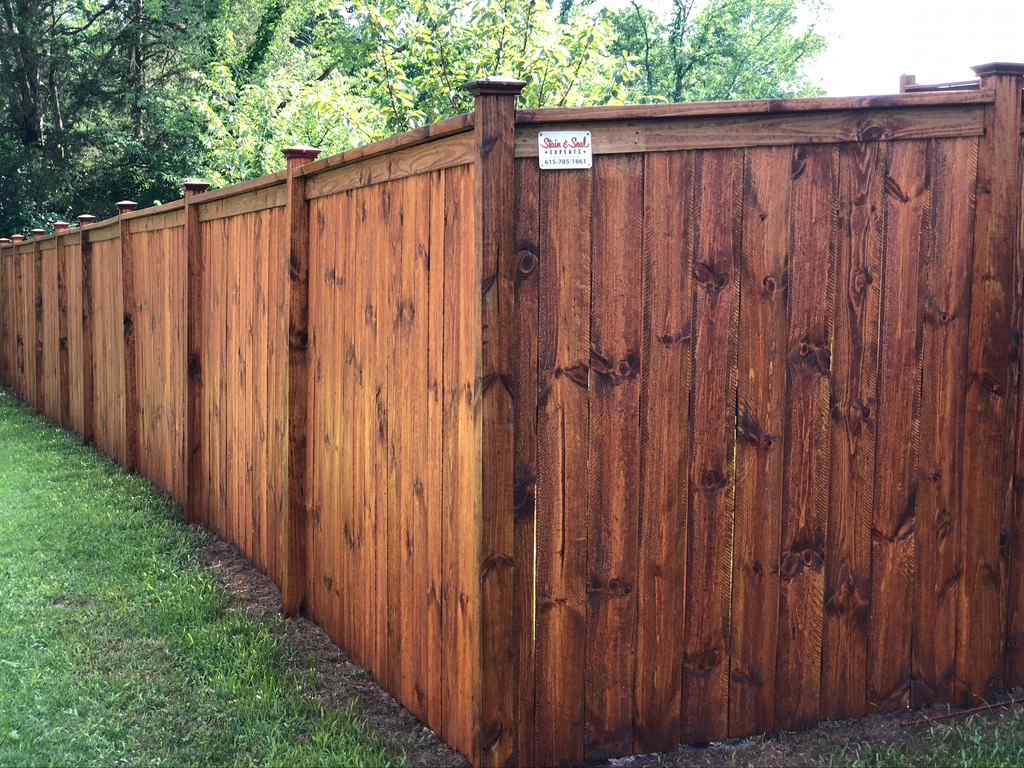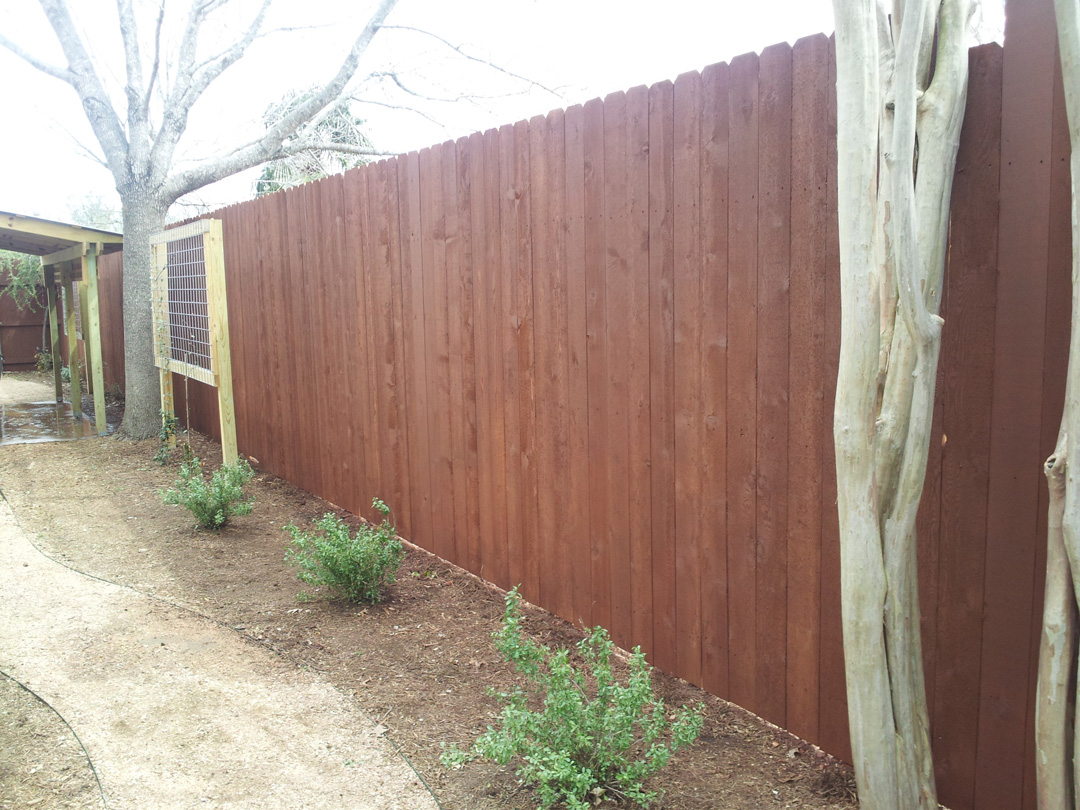Restore Your Fence's Appearance with Top quality Fence Staining!
Wiki Article
Exactly How to Choose the Right Fencing Stain for Your Residential Property
When it comes to enhancing the look and sturdiness of your home's fence, choosing the right tarnish is an essential choice that calls for mindful consideration. How can you make sure that you select the best fence stain that straightens with your property's style and upkeep requirements?Recognizing Wood Kind
To pick the ideal fencing discolor, it is necessary to have a detailed understanding of the various sorts of timber generally made use of for secure fencing. The selection of wood plays a crucial role in determining the longevity and overall looks of the fencing. Cedar is a popular choice due to its all-natural resistance to degeneration and bugs, making it a sturdy alternative for outdoor structures. Pine is another usual wood utilized in secure fencing, understood for its price and simplicity of staining. Want is more susceptible to warping and rotting compared to cedar. Redwood is a high-end choice recognized for its striking appearance and all-natural sturdiness, though it features a higher cost. When choosing a fencing discolor, it is essential to take into consideration the sort of timber being used to make sure compatibility and optimal defense. Recognizing the qualities of various wood types will certainly assist you make an educated choice when it pertains to choosing the best fence tarnish for your property - Fence Staining Nashville TN.Choosing the Right Color
Selecting a proper shade for your fencing tarnish is a vital choice that substantially influences the general aesthetic allure of your residential or commercial property. The shade you select need to enhance the design of your home, blend harmoniously with the surroundings, and show your personal taste. When picking a shade, think about the existing shade scheme of your home. For a natural look, earthy tones like browns, environment-friendlies, or grays function well. These shades can assist the fencing blend into the landscape and develop a cohesive appearance. If you like an even more contemporary or strong appearance, think about choosing darker shades like black or deep charcoal for a striking contrast. Lighter colors such as whites or light grays can make a fencing show up bigger and include a touch of beauty to your residential property. Inevitably, the best shade option will boost the elegance of your fence and elevate the general curb allure of your home.
Taking Into Consideration Transparency Degrees
When picking the best shade for your fence discolor, another important facet to think about is the level of transparency that will best suit your property's visual and upkeep needs. Openness levels in fencing discolorations normally come under three groups: clear, semi-transparent, and solid. Transparent spots enable the natural beauty of the timber to show via while offering marginal security versus the aspects. They are suitable for new or properly maintained fencings where showcasing the timber grain is a top priority. Semi-transparent spots provide an equilibrium between shade enhancement and protection, permitting some timber grain to be visible while providing modest shielding from UV rays and dampness. Strong stains, on the other hand, provide the most protection as they totally cover the timber with an opaque surface. These appropriate for older fencings or those seeking considerable defense or shade adjustment. Consider the degree of direct exposure your fencing faces, the desired upkeep regularity, and the aesthetic you wish to accomplish when choosing the best openness level for your fence tarnish.Examining Upkeep Needs
Considering the long life and upkeep of your fencing, evaluating the maintenance needs is essential in establishing the most appropriate fencing tarnish for your property. The level of maintenance required for your fencing can differ depending upon variables such as the kind of timber, weather conditions in your area, and your individual preferences.When assessing upkeep requirements, it is crucial to think about the longevity of the fence discolor. Some stains require even more constant reapplication than others, so choosing a discolor with a longer lifespan can help in reducing the total maintenance demands of your fence (Fence Staining Service). Additionally, variables such as resistance to UV rays, water, and mold can impact exactly how usually you need to re-stain your fencing

Examining Examples Before Application
Before applying any type of fencing stain, it is advisable to carry out sample tests to ensure compatibility with the wood and wanted aesthetic end result. Checking examples allows you to evaluate just how the tarnish will connect with the particular kind of wood used in your fencing, as various timbers can absorb discolorations in different ways. To begin, choose a tiny unnoticeable area of the fencing to apply the tarnish examples.Verdict
To conclude, picking the proper fencing stain for your residential or commercial property involves recognizing the wood type, selecting the ideal shade, taking into consideration openness degrees, assessing upkeep demands, and testing examples prior to application (Fence Staining). By taking these factors right into factor to consider, you can make sure that your fencing stain matches your home while giving the essential protection and longevity. Make an informed decision to improve the appearance and durability of your fenceReport this wiki page